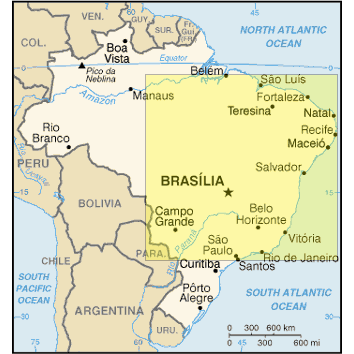
TED Case Study #721 - Brian Morgan

The
Issue:
Unknown
to many outside Brazil, the cultural significance of cachaça, a
distilled liquor, ranks
among soccer, carnival, and samba. Although non-Brazilian’s compare
cachaça to rum, their only similarity is that they both originate
from sugarcane. Cachaça first gained popularity among slaves and
peasants during Brazil’s colonial period but the spirit has recently
become a favorite domestically and internationally regardless of the drinker’s
class. Also, Brazilian cachaça exports to Europe and the United
States have been aided by the trendy drink caipirinha. The cocktail’s
global success has inspired other Caribbean and South American states
to produce their own cachaça-like alcohols. Consequently, the Brazilian
government has initiated protectionist measures at home and abroad to
preserve cachaça’s foreign markets. These developments bring
together cachaça’s trade, cultural, and environmental aspects.
Description:
No one knows
for sure who began cachaça production, but everyone agrees that
it began somewhere between 1530 and 1550. Around this time, sugarcane
had been introduced to Brazil as a cash crop by their colonial motherland
Portugal. Slaves, who planted and harvested the sugarcane, were given
leftover cane juice from the milling process and let it ferment to produce
an alcoholic beverage. As an incentive, plantation owners often promised
slaves this fermented cane juice once they had completed their work. Eventually,
someone realized that by boiling the fermented
juice a more potent libation
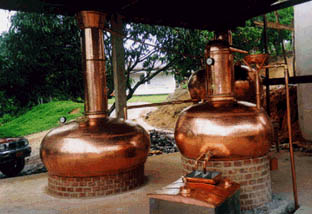 was
produced, marking the birth of cachaça. At this point, wealthy
Brazilians regarded cachaça as a poor
man’s drink and thus
preferred European alternatives. However, this did not
stop cachaça from becoming an integral part of Brazilian culture.
It is estimated Brazilians consume close to 350 million gallons of cachaça
per year – about two gallons per person.
was
produced, marking the birth of cachaça. At this point, wealthy
Brazilians regarded cachaça as a poor
man’s drink and thus
preferred European alternatives. However, this did not
stop cachaça from becoming an integral part of Brazilian culture.
It is estimated Brazilians consume close to 350 million gallons of cachaça
per year – about two gallons per person.
There are roughly 30,000 small producers along with a few handfuls of large cachaça producers in Brazil. Because the distillation process is relatively easy compared to other liquors and because sugarcane is so abundant in Brazil, the business can be is open to anyone. Sugarcane is first milled to extract its juice, then fermented for about 24 hours, and finally boiled until it an 80-proof substance emerges. Cachaça is usually bottled soon after distillation but some have tried to fashion new varieties by aging cachaça much like whiskey. The Brazilian legislation indicates that cachaça must be aged for at least one year in barrels no larger than 700 liters for the legitimate use of the “aged” appellation. Brazilians aging their cachaça use a variety of woods for their barrels, including Brazilian woods such as imburana, cedar, freijó, and jequitibá and American and European oak, which give the liquor a smoother, rounder taste. In addition, a third type of cachaça, called “yellow” cachaça, is made by merely adding caramel or wood extracts directly into the drink without aging causing the cachaça to have a much sweeter taste. Regardless of the variety, cachaça should not be confused with rum, which is distilled from the molasses left over after sugar refinement. However, the mistake is made; cachaça imports into the United States are taxed as rum and cachaça is sometimes referred to as Brazilian rum.
Cachaça’s export capability was uncertain until the caipirinha
became a bestseller in bars across Europe, United States, and Japan.
The
cocktail combines crushed limes, sugar, ice, and cachaça to produce
a sweet and zesty flavor packed with alcoholic intensity. But since
cachaça
and caipirinha were associated with drunkness and the lower classes,
not until recently when the drinks began to be marketed as fun, exciting,
and tropical have exports grown. Germany has become the largest consumer
of cachaça outside Latin America, constituting about one forth
of the foreign market. In addition, only beer exceeds caipirinha sales
in Germany.
The Brazilian government has also helped promote cachaça by providing
caipirinhas at social functions and facilitating
exports through technical consultation. Ambitious export programs
aim
to increase cachaça exports to 40 million liters per annum by
end of this decade. In  addition,
Brazilians hope that cachaça and caipirinha will become what
tequila and margaritas
have
become for Mexico: an internationally
recognized image associated with the Brazilian
lifestyle. Though popular all year round, Brazilians also enjoy sipping
cachaça during Carnaval, a festival similar to Mardi Gras.
addition,
Brazilians hope that cachaça and caipirinha will become what
tequila and margaritas
have
become for Mexico: an internationally
recognized image associated with the Brazilian
lifestyle. Though popular all year round, Brazilians also enjoy sipping
cachaça during Carnaval, a festival similar to Mardi Gras.
However, since sugarcane is such a homogenous good and since the distillation process does not impose geographic limitations outside the wood used to age cachaça, imitation cachaças have been increasingly manufactured in other parts of sugar-producing Latin America. Colombia and Martinique are among the few culprits trying to use cachaça’s name to sell their alcohol. This event has started to worry Brazilian cachaça producers because the imposters could crowd them out of foreign markets. Adding to this potential disaster, the quality or unique taste of a cachaça is barely noticeable once it is mixed into a sugar-rich caipirinha.
To protect its cachaça industry, the Brazilian government has imposed several regulatory measures in recent years. In 2001, President Fernando Enrique Cardoso signed a decree establishing cachaça as the official and exclusive name for cane alcohol in Brazil. However, while it tried to prohibit the use of the name elsewhere, the Brazilian government failed on several grounds due to lack of clarity and clear definition. In October 2003, the government, under President Luis Inacio Lula da Silva, issued another decree with greater specifications on cachaça and the caipirinha. Brazil has also sent the issue to the World Trade Organization in hopes that cachaça will gain protection under the Trade Related Aspects of Intellectual Property Rights agreement (TRIPS). Moreover, Brazil is currently involved in bilateral negotiations with the European Union to ensure that the cachaça name will be used only with Brazilian products within member states.
Related Cases:
| Mezcal Mezcal and Protected Geographic Indication | Tennessee Whiskey Tennessee Whiskey and Protected Geographic Indication |
|
Kentucky Bourbon Kentucky Bourbon and Protected Geographic Indication |
Canadian Whiskey Canadian Whiskey and Protected Geographic Indication |
| Smirnoff Smirnoff and Russian Cultural Geographic Indicators | Polish Vodka Polish Vodka and Cultural Geographic Indicators |
| Scotch Intellectual Property Rights of Scotch, by Elizabeth McRoberts | Pisco Pisco Liquor, Trade and Intellectual Property Issues between Chile and Peru |
| Bacardi The Piracy of Havana Club Run | Cognac The Elixir of the Gods |
| Tequila Tequila: Trade, Culture and Environment | Grappa Who owns Grappa? Name and EU-South Africa Trade Agreement |
Author and Date: Brian Morgan; April 6, 2004
Legal Clusters (Top)
On June 3, 2003, the Brazilian government presented its specifications on cachaça to the World Trade Organization and the World Customs Organization in efforts to obtain international protection of cachaça exports and to change cachaça’s classification on tariff schedules. Brazil, which has begun to vigorously promote cachaça as a national drink abroad, hopes to gain greater access to niche market through these legal protections. Brazil is also currently involved in bi-lateral agreements with the European Union on wines and spirits. However, the EU hopes to absorb the decisions made in this agreement with another set of bilateral negotiations with Mercosur, or the common market of the Southern Cone, consisting of Brazil, Paraguay, Uruguay, and Argentina. For the moment, none of these agreements have made any definitive statements about cachaça’s legal status.
Under the TRIPS agreement of the WTO, cachaça could potentially gain protection as provided by Article 22 and 23. According to Article 22, “geographical indications are, for the purposes of this Agreement, indications which identify a good as originating in the territory of a Member, or a region or locality in that territory, where a given quality, reputation or other characteristic of the good is essentially attributable to its geographical origin.” In the case of cachaça, Brazil is arguing that the drink is unique to its territory because of the liquor’s history, origin, and its ties to Brazilian culture. If cachaça qualifies for geographic indication, it would also receive the higher level of protection granted by Article 23, which states that signatories of the TRIPS agreement would need to prevent the use of the name cachaça, “even where the true origin of the goods is indicated or the geographical indication is used in translation or accompanied by expressions such as “kind”, “type”, “style”, “imitation” or the like.”
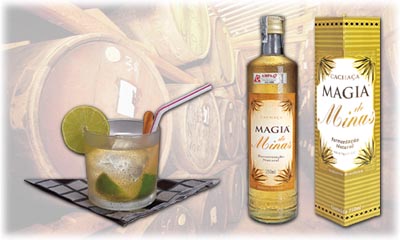 Currently,
the EU and Mercosur have been involved in a series of bilateral negotiations
and have reached the final stage, which is referred to as the “Brussels
Programme.” A number of issues have been addressed, and in April
2004 alone delegates negotiated trade measures concerning goods,
services,
government procurement, and investment; policies of sustainable development;
and other processes of integration. Among the topics discussed
are the EU-Mercosur agreements on wines and spirits, which includes
cachaça. While Brazil seeks geographic indication of its
national drink, the EU plans to negotiate the gradual reduction of
Mercosur tariffs
on imports of alcoholic beverages. Mercosur’s common external tariff
currently places a 20% duty on the value of all wines and spirits entering
the country. The most difficult negotiations of the Brussels Programme,
however, include liberalization of agriculture, pursued by Mercosur,
and liberalization of services, sought by the EU. Yet, according to Agencia
Brasil, “The Brazilian Ambassador to France, Sérgio Amaral,
expressed his confidence that negotiations between the Mercosur and
the
European Union will result in the signing of an agreement between the
two economic blocs by June of this year [2004].” This would conclude
a landmark agreement that could create one of the world’s largest
free trade zones in the world.
Currently,
the EU and Mercosur have been involved in a series of bilateral negotiations
and have reached the final stage, which is referred to as the “Brussels
Programme.” A number of issues have been addressed, and in April
2004 alone delegates negotiated trade measures concerning goods,
services,
government procurement, and investment; policies of sustainable development;
and other processes of integration. Among the topics discussed
are the EU-Mercosur agreements on wines and spirits, which includes
cachaça. While Brazil seeks geographic indication of its
national drink, the EU plans to negotiate the gradual reduction of
Mercosur tariffs
on imports of alcoholic beverages. Mercosur’s common external tariff
currently places a 20% duty on the value of all wines and spirits entering
the country. The most difficult negotiations of the Brussels Programme,
however, include liberalization of agriculture, pursued by Mercosur,
and liberalization of services, sought by the EU. Yet, according to Agencia
Brasil, “The Brazilian Ambassador to France, Sérgio Amaral,
expressed his confidence that negotiations between the Mercosur and
the
European Union will result in the signing of an agreement between the
two economic blocs by June of this year [2004].” This would conclude
a landmark agreement that could create one of the world’s largest
free trade zones in the world.
If cachaça attains protection for geographic indication in both of these negotiations, it would create two additional avenues for dispute settlement. First, Brazil would be able to file complaints through the WTO, which would allow the country to target Caribbean and Central American nations, such as Colombia and Martinique, that illegally produce cachaça. And Second, Brazil could resolve conflicts directly with the EU regarding cachaça. This could involve failure by an EU member to restrict importation of cachaça imposters or even failure to treat Brazilian distilled cane juice specifically as cachaça and not rum. However, since that point has not been reached, Brazil can at least argue its case within Mercosur. In this case, Brazil would first begin direct negotiations with the country in question for a period of 15 days. If no conclusion is reached, the settlement could proceed to a hearing before the Common Market Group, which is the executive organ of Mercosur, or to an ad hoc court created by the Administrative Secretariat of Mercosur. The decisions reached in either case would be binding.
Nonetheless, Brazil has not yet officially disputed any instances where other countries have tried to sell their drinks as cachaça. Since Brazil is trying to lay claim to its distilled treasure before any other country, this will avoid the sort of disputes that occurred between Chile and Peru over Pisco and Italy and South Africa over Grappa. In the WTO agreements, however, Brazil could face pressure from Caribbean nations that are against cachaça’s geographic indication just as China opposed the protection of Mexican Tequila. Yet, cachaça dispute settlement would probably resemble something like the cognac case between Brazil and France. The two countries negotiated bilaterally and agreed that only the French could call their drink cognac and that Brazil would duly protect it.
Discourse and Status: Agreement and In Progress
Forum and Scope: Mercosur-EU and Multilateral
Decision Breadth: EU=15
Legal Standing: Treaty
Geographic Clusters (Top)
Geographic Location:
Geographic Domain: South America
Geographic Site: Eastern South America
Geographic Impact: Brazil
Sub-National Factors: Yes
Type of Habitat: Tropical
Trade Clusters (Top)
Brazil is by far the largest and most important producer and exporter of cachaça. This is not surprising since the distilled liquor originated in the country and since the Brazilian government has declared the drink a national trademark and begun to press for its international protection. Over the last five years, Brazilian exports of cachaça have skyrocketed as a result of successful international marketing and export campaigns. According to the Brazilian Cachaça Development Program (PBDAC), 500,000 liters of cachaça were sent abroad in 1995, while 2003 estimates project exports at 20 million liters in over 60 countries around the world (see Figure 1). In 2001, the 11.1 million liters sold outside Brazil yielded $9 million in revenue. As its short-term goal, PBDAC hopes to increase cachaça exports to 38 million liters by 2010. However, Brazilian cachaça exporters must first overcome distribution problems. Unlike José Cuervo, Johnnie Walker, and Smirnoff, distributed by the well-established UDV, cachaça companies have trouble finding expert distribution companies.
The export explosion can be partly attributed to the success of the caipirinha, a cachaça-based cocktail with sugar and limes. Caipirinha enthusiasts enjoy the drink because of its exotic and tropical flavor as well as its association with Brazilian culture. But while caipirinhas and cachaça become more popular abroad, their real success lies at home. In 2002, of the 1.3 billion liters of cachaça were distilled in Brazil, exports represent only 1% of that figure. The industry generates about $5 billion and employs roughly 450, 000 Brazilians directly or indirectly. PBDAC claims that there are 30,000 cachaça manufacturers producing 5,000 different brands of the spirit. Of those producers, Industrias Muller de Bebidas ranks number one. Their most popular cachaça, Pirassununga 51, makes up 33% of the market share alone.
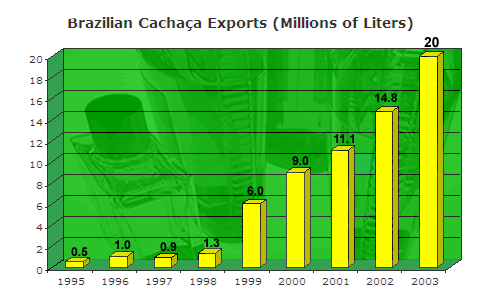
Besides Brazil as the primary consumer of cachaça, Paraguay is the largest importer of cachaça. This is not surprising since Brazil and Paraguay are among the four member nations that form Mercosur. One of the primary objectives of Mercosur is to eliminate all tariff and non-tariff barriers to trade within member states, which includes barriers to trade in beverages. Therefore, Paraguay is able to purchase cachaça at a lower rate. However, Germany might soon replace Paraguay as the leading importer of cachaça. Current estimates by PBDAC show that while Paraguay imports 28.19% of Brazilian cachaça exports, Germany imports 23.31%. All this cachaça is needed for caipirinhas at German bars; the cocktail is the second most consumed beverage in Germany after beer. As Mercosur countries negotiates with the European Union in a trade agreement to lower tariffs on spirits and wines, the amount of cachaça entering Europe will undoubtedly continue to increase.
However, Brazilian cachaça has run into several obstacles in the international market. One of these complications concerns cachaça’s classification as a distilled spirit. In the US, EU, and other countries, cachaça officially enters as rum. The US tariff schedules does not have a separate category for cachaça as it does for tequila, pisco, mezcal, Scotch whisky, and others, and lists the Brazilian spirit under the heading “Rum and Tafia.” Yet, cachaça exporters are not complaining about the tariffs themselves because under the Generalized System of Preferences of Title V of the Trade Act of 1974, Brazil qualifies for special status as a developing country. According to this provision, all Brazilian cachaça enters the US tariff-free. Therefore, the effort to create cachaça’s own classification seeks to increase its international recognition and earnings by highlighting cachaça’s uniqueness.
Another similar hurdle Brazilian cachaça must face is competition against rum in Europe. During the Lomé Conventions between the EU and the Africa-Caribbean-Pacific (ACP) nations, which are among the poorest countries in the world, the EU established a rum protocol that placed a quota on the importation of rum from Caribbean ACP trade partners. Brazil, which is not an ACP country, could bypass the protocol and export unlimited quantities of cachaça to Europe even though the liquor is classified as rum. However, in the Cotonou Agreement between the EU and ACP nations in 2000, the rum protocol was terminated. Caribbean nations have since been able to export rum to Europe with fewer obstructions. To further complicate the situation, in August 2002, the EU initiated a program to develop and modernize the Caribbean rum industry so that it will be able to remain survive amidst global liberalization. The 4-year program will provide $70 million to 15 Caribbean ACP rum producers, including the Dominican Republic, Haiti, and the Bahamas.
To add to these headaches, certain alcohol taxes are still placed on Brazilian cachaça. According to the Alcohol and Tobacco Tax and Trade Bureau of the US Treasury, a $13.50 excise tax per proof gallon, the equivalent of $2.14 for 750mL bottle, is levied on all distilled spirits in the US. Considering that a bottle of cachaça can be bought in Brazil for about a dollar, and even as little as $.10 a shot, this places considerable strain on exports. In addition, while Puerto Rican rum faces the same taxation, most of the revenues received from the excise tax in the US are given back to the Puerto Rican government. Hence, Puerto Rican rum manufacturers, such as the producers of Bacardi, potentially gain from money their government can use to support the Puerto Rican economy and export industries.
Since cachaça is technically Brazilian, information regarding other countries that have begun to export under the name is hard to find. Yet, we can still make some comparisons in relation to distilled spirit export. According to PBDAC, cachaça is the third most distilled liquor on the planet, falling behind to vodka and soju. Other drinks that followed were, in order, shochu (A Japanese liquor that can be distilled from sweet potatoes, rice, and even barley), gin, rum, Scotch whisky, Thai whisky, and brandy. Remarkably, production of cachaça was twice that of rum – geographic indication could really help this rising star.
| Most Distilled Liqours Worldwide | |
| 1) Vodka | 6) Rum |
| 2) Soju | 7) Scotch Whiskey |
| 3) Cachaca | 8) Thai Whiskey |
| 4) Shochu | 9) Brandy |
| 5) Gin | |
Type of Measure:
Direct v. Indirect Impacts: DirectRelation of Trade Measure to Environmental Impact:
Directly Related to Product: Yes, Cachaça
Indirectly Related to Product: Yes, Sugar
Not Related to Product: No
Related to Process: Yes, Culture
Trade Product Identification: Cachaça
Economic Data:
Impact of Trade Restriction: High
Industry Sector: Food
Exporters
and Importers:
Largest cachaça exporter: Brazil and Many
Top ten cachaça importers (as a percentage of all Brazilian exports):
|
1) Paraguay (28.19%) |
2) Germany (23.31%) | 3) Italy (6.09%) | 4) Uruguay (5.94%) | 5) Portugal (5.68%) |
| 6) Bolivia (4.28%) | 7) USA (4.13%) | 8) Chile (3.69%) | 9) Spain (3.60%) | 10) Netherlands (2.39%) |
Environment
Clusters (Top)
The
environmental aspects of cachaça begin with sugarcane, and thus
the story begins in the early 1500s when sugarcane arrived in Brazil.
According to the São Paulo Sugarcane Agro Industry Union (UNICA),
explorers brought sugarcane into Northeastern Brazil for both economic
and political interests. Sugar was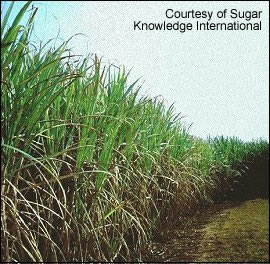 a major luxury good at the time and therefore Portugal encouraged cane
production in Brazil, its colony, to increase its own wealth and compete
with Caribbean sugar production. With the Spaniards and other Europeans
viciously conquering territory in the new world, the Portuguese also decided
to settle and grow sugarcane on slave plantations in order to maintain
a legal claim on the land. However, in 1630, the Dutch East India Company
invaded the Northeastern Brazil, what is now the state of Pernambuco,
and began to plant and export sugar to Amsterdam. After 24 years, the
Brazilian colonists expelled the Dutch, who moved their enterprise to
the Caribbean islands and took with them the knowledge, experience, and
technology that would devastate Brazilian sugarcane production (these
islands were closer to Europe than Brazil making transportation costs
much cheaper) until a rebound during decolonization.
a major luxury good at the time and therefore Portugal encouraged cane
production in Brazil, its colony, to increase its own wealth and compete
with Caribbean sugar production. With the Spaniards and other Europeans
viciously conquering territory in the new world, the Portuguese also decided
to settle and grow sugarcane on slave plantations in order to maintain
a legal claim on the land. However, in 1630, the Dutch East India Company
invaded the Northeastern Brazil, what is now the state of Pernambuco,
and began to plant and export sugar to Amsterdam. After 24 years, the
Brazilian colonists expelled the Dutch, who moved their enterprise to
the Caribbean islands and took with them the knowledge, experience, and
technology that would devastate Brazilian sugarcane production (these
islands were closer to Europe than Brazil making transportation costs
much cheaper) until a rebound during decolonization.
Today, Brazil is the largest producer of sugarcane and its derivatives. According to the Global Information Network, in 2001, one million Brazilians grew 291 million metric tons of sugarcane, distilled 16 billion liters of cane alcohol, and extracted 20 million metric tons of raw sugar. About 55-60% of sugar is used for ethanol production while 40-45% is used to make raw sugar. As the largest exporter of sugar, Brazil possesses considerable control over the international sugar market and the commodity’s price. However, because of overproduction both domestically and abroad, sugar prices have remained fairly low. In addition, sugar and the ethanol distilled from sugarcane are among the most heavily protected goods internationally. During the Mercosur negotiations, a dispute arose between Argentina, a less efficient cane producer, and Brazil over Brazilian subsidies to Northeastern sugarcane farmers. These subsidies have been encouraging ethanol production as an alternative fuel source. As oil prices increased during the 1970s, the Brazilian government launched a campaign to burn ethanol in cars and power plants. In the 1980s, about 80% of the cars manufactured in Brazil ran exclusively on ethanol. Now, this figure has dropped to about 1%, mainly because of an ethanol shortage in 1989 and 1990 that swayed car manufacturers to return to gasoline. Recenty, automakers have designed new vehicles about to run on enthanol, gasoline, or both, without corroding engine parts. To continue to stimulate further demand for ethanol, the Brazilian government requires a certain percentage of ethanol in gasoline, usually between 20% and 24 %, which is set by Presidential decree.
| Sugar-Growing Regions of Brazil | Total Brazilian Sugar Cane Production | Total Brazilian Raw Sugar Export |
| Northeast | 20-25% | 70-75% |
| Center-South | 75-80% | 25-30% |
Sugarcane production is concentrated in two regions of Brazil, the Northeast and the Center-South. According to the US Department of Agriculture, the Northeast produces 20-25% of sugarcane and exports 70-75% of Brazilian raw sugar, while the Center-South region produces 75-80% of sugarcane and exports 25-30% of raw sugar (also see growing areas). The primary differences between production in the two regions are productivity, cane juice quality, and the growing seasons. Although sugarcane entered Brazil through the Northeast, this region actually produces more expensive yet lesser quality sugarcane. The Center-South, especially the state of São Paulo has the advantage of greater wealth and investment and therefore efficiency, and the region also has a more ideal climate. Both regions have well-suited growing conditions, which include long and warm days along with plenty of rain and a high relative humidity; but the Central-South’s climate is superior during ripening, a great difference between maximum and minimum temperatures. Sucrose builds up when nights are cool, increasing the quality of the cane juice, which is measured as percent of mass. UNICA claims that the state of São Paulo grows sugarcane that is 14-15.5% sucrose, capable of yielding 140-145 kg of raw sugar/ton of cane, 80-85 liters of ethanol/ton of cane.
Because such an overabundance of sugar, the increased demand for cachaça in Europe and North America has greatly benefited Brazil. However, since the quality of sugarcane is measured by its sucrose concentration, any country with a good climate and the available technology can produce high-quality cane. In addition, although several species of sugarcane exist, they all essentially yield sucrose. Since cachaça can be produced at home in someone’s backyard and in a factory, there is also no one definitive cachaça flavor, facilitating the fabrication of imposters. The real difference would then rely on the method of fermentation and distillation, which includes the aging process. The flavors added by the Brazilian woods used for barrels could separate genuine cachaça from others, but the majority of cachaça never reaches the aging stage. Even if they do, barrels contain wood from American and European oaks, which create hybrid cachaças with an ambiguous identity. Therefore, geographic indication could be granted for cultural reasons instead because the only verifiably unique aspect of cachaça is its origin and its ubiquitous presence in Brazilian society.
Environmental Problem Type:
Name, Type, and Diversity of Species:
Resource Impact and Effect: High and Scale
Urgency and Lifetime: Law and 100s of years
Substitutes: Like products;Rum, other distilled liquors
Other Factors (Top)
Culture: Yes
Trans-Boundary Issues: No
Rights: Yes
Relevant
Literature:
1) Agencia Brazil, “Brazil tries to have cachaça recognized
as an eminently Brazilian drink,” June 10, 2003. http://www.radiobras.gov.br/materia.phtml?materia=154328&editoria=
2) Alcohol and Tobacco Tax and Trade Bureau, US Treasury Department. http://www.ttb.gov/alcohol/index.htm
3) Brazilian Program for Cachaça Development (PBDAC). http://www.pbdac.com.br
4) Brazilian Ministry of Development, Industry, and Foreign Trade. http://www.desenvolvimento.gov.br/sitio/secex/negInternacionais/tec/apresentacao.php
5) Brazzil Magazine Online. “Brazil, Land of Cachaça. It’s the Law.” October 2003. http://www.brazzil.com/2003/html/articles/oct03/p111oct03.htm
6) Cachaça Export. Ltda. http://www.cachacaexport.com.br
7) The Courier ACP-EU. “Adding punch to the Caribbean Rum Industry.” No 198, May-June 2003. http://europa.eu.int/comm/development/body/publications/courier/index_198_en.htm
8) European Commission, “EU-Mercosur: Trade Ministerial agrees roadmap for final phase of free trade negotiations.” http://europa.eu.int/comm/external_relations/mercosur/intro/ip03_1544.htm
9) Ikisan. http://www.ikisan.com
10) Luxner, Larry. “Brazil Bottles a Good Idea.” Americas. Washington: January/February 1997. Vol. 49, Issue 1, p4
11) National Public Radio. “Profile: Distillers in Brazil Trying to Change the Cheap Rotgut Image of the Liquor Cachaça, Which is Used in the Popular Drink Caipirinha.” Morning Edition. Washington, DC: July 26, 2002.
12) Osava, Mario. “Trade-Brazil: Cachaça Ready to Challenge Tequila and Rum.” Global Information Network. New York: April 1, 2002
13) Osava, Mario. “Trade-Brazil: Fuel Alcohol Could Sustain the Sugarcane,” Global Information Network. New York: January 10, 2002
14) Osava, Mario. “Dual Fuel Cars Seen as Boon for the Environment.” Global Information Network. New York: August 27, 2003
15) Puerto Rico Herald. “Excise tax on Rum Could Be Trimmed,” December 11, 2003. http://www.puertorico-herald.org/issues/2003/vol7n50/CBExciseTax-en.shtml
16) Regan, Gary. “The Tale of Cachaça’s Transformation to Caipirinha is One of Sweet Success.” Nation’s Restaurant News. New York: July 31, 2002. Vol. 34, Issue 31, p29
17) Revista On-line Mercosur. http://www.mercosul.gov.br/default.asp
18) São Paulo Sugarcane Agro Industry Union (UNICA). http://www.unica.com.br
19) Sugar Knowledge International. http://www.sucrose.com
20) Bolling, Christine, and Nydia R. Suarez. “The Brazilian Sugarcane Industry: Recent Developments.” US Department of Agriculture, September 2001. http://www.ers.usda.gov/Briefing/Brazil/braziliansugar.pdf
21) US International Trade Commission. http://www.usitc.gov/taffairs.htm
22) World Trade Organization, “Standards concerning the availability, scope and use of Intellectual Property Rights.” http://www.wto.org/english/docs_e/legal_e/27-trips_04b_e.htm
Questions? Comments? Email Brian at srjohnnie@hotmail.com
